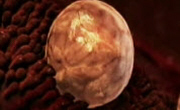During the rapid industrialization of the 1960s and 1970s, architectural typologies evolved to meet diverse societal demands such as policy shifts, urban planning changes, and demographic transitions, giving rise to massive structures and complex arch...
http://chineseinput.net/에서 pinyin(병음)방식으로 중국어를 변환할 수 있습니다.
변환된 중국어를 복사하여 사용하시면 됩니다.
- 中文 을 입력하시려면 zhongwen을 입력하시고 space를누르시면됩니다.
- 北京 을 입력하시려면 beijing을 입력하시고 space를 누르시면 됩니다.
항상성 개념을 적용한 지속가능한 복합시설에 관한 연구 : 부산데파트 보전재개발 계획안을 중심으로 = A Study on the Sustainable Complex with Homeostasis Concept
한글로보기부가정보
다국어 초록 (Multilingual Abstract)
architectural typologies evolved to meet diverse societal demands such
as policy shifts, urban planning changes, and demographic transitions,
giving rise to massive structures and complex architectural forms.
Among the newly emerging typologies of this period was the
“commercial-residential apartment,” a type of apartment constructed in
the 1960s and 1970s. These commercial-residential apartments, based
on government-led urban planning initiatives, represent an early form
of mixed-use residential architecture. Characteristically, they feature
commercial spaces on the lower floors and residential apartments
above, embodying the initial model of multi-functional residential
architecture. Over the past 40 years, many of these large-scale,
complex structures have aged, losing their spatial significance and
succumbing to deterioration, often resulting in demolition or
redevelopment due to a loss of sustainability. Some structures,
however, recognized for their spatial uniqueness or historical value,
are being preserved through remodeling or redevelopment efforts
aimed at re-establishing a sense of place.
This study focuses on “Busan Department,” the first department
store-style market in Busan, which reflects the era's efforts to
address the emerging urban challenges through innovative mixed-use
architecture. By applying the concept of homeostasis—a
self-regulatory process that maintains stability while adapting to
change, reflecting an ideal balance within the modern urban
environment—the study aims to propose a sustainable model for
mixed-use facilities.
To achieve this, the research explores natural homeostasis,
sustainability for homeostasis, and architectural sustainability. Within
the domain of natural homeostasis, the study delves into the
resilience of the land, seeking a nuanced understanding of
sustainability. By centering on the land's resilience, the research
strives to establish stability and harmony through the optimal
conditions of the land. In this view, homeostasis serves as a concept
for securing the stability of the site, where the inherent
characteristics of the land must be met, the unique traits of the site
must be integrated into the building, and harmony with surrounding
buildings must be achieved, thus fostering a close relationship
between the land and the building and offering extensive opportunities
for sustainable application.
Consequently, this study examines the causes of unsustainability
in Busan Department and assesses its ecological potential. By
capturing the enduring memory embedded within the site’s resilience,
the research offers an architectural framework and proposes
redevelopment strategies for Busan Department as a mixed-use
facility based on the concept of homeostasis.
During the rapid industrialization of the 1960s and 1970s,
architectural typologies evolved to meet diverse societal demands such
as policy shifts, urban planning changes, and demographic transitions,
giving rise to massive structures and complex architectural forms.
Among the newly emerging typologies of this period was the
“commercial-residential apartment,” a type of apartment constructed in
the 1960s and 1970s. These commercial-residential apartments, based
on government-led urban planning initiatives, represent an early form
of mixed-use residential architecture. Characteristically, they feature
commercial spaces on the lower floors and residential apartments
above, embodying the initial model of multi-functional residential
architecture. Over the past 40 years, many of these large-scale,
complex structures have aged, losing their spatial significance and
succumbing to deterioration, often resulting in demolition or
redevelopment due to a loss of sustainability. Some structures,
however, recognized for their spatial uniqueness or historical value,
are being preserved through remodeling or redevelopment efforts
aimed at re-establishing a sense of place.
This study focuses on “Busan Department,” the first department
store-style market in Busan, which reflects the era's efforts to
address the emerging urban challenges through innovative mixed-use
architecture. By applying the concept of homeostasis—a
self-regulatory process that maintains stability while adapting to
change, reflecting an ideal balance within the modern urban
environment—the study aims to propose a sustainable model for
mixed-use facilities.
To achieve this, the research explores natural homeostasis,
sustainability for homeostasis, and architectural sustainability. Within
the domain of natural homeostasis, the study delves into the
resilience of the land, seeking a nuanced understanding of
sustainability. By centering on the land's resilience, the research
strives to establish stability and harmony through the optimal
conditions of the land. In this view, homeostasis serves as a concept
for securing the stability of the site, where the inherent
characteristics of the land must be met, the unique traits of the site
must be integrated into the building, and harmony with surrounding
buildings must be achieved, thus fostering a close relationship
between the land and the building and offering extensive opportunities
for sustainable application.
Consequently, this study examines the causes of unsustainability
in Busan Department and assesses its ecological potential. By
capturing the enduring memory embedded within the site’s resilience,
the research offers an architectural framework and proposes
redevelopment strategies for Busan Department as a mixed-use
facility based on the concept of homeostasis.
국문 초록 (Abstract)
책, 도시계획, 인구의 변화 등과 같은 다양한 사회적인 요구를 배경으로
생성되고 변화하면서 전화기를 맞이하여 거대한 구조물과 복합성을 지닌
건축유형이 나타나기 시작했다. 이 시기에 새롭게 등장한 상가아파트는
1960~1970년대에 건설된 아파트 유형 중의 하나이다. 상가아파트는 정부
의 도시계획을 기반으로 새롭게 등장한 복합 주거유형이며, 큰 특징으로
는 저층부는 상가, 상층부는 아파트의 형태를 띠고 있으며, 복합 주거건
축물의 초기유형으로 볼 수 있다. 대규모화와 복합성을 지닌 상가아파트
는 새로운 복합적 주택 유형으로 지어진 지 40여 년의 시간이 넘어가면
서 상당수 낡고 흉물스럽게 변하였고 공간적 특성 또한 희미해지고 있
다. 이로 인해 지속성을 상실하여 철거되거나 재건축되고 있다. 그중에서
현재 남아있는 건물 중 공간적 특성이나 존재의 가치를 인정받은 건축물
은 리모델링이나 재개발을 통해 장소성을 확립하려고 시도하고 있다.
이에 본 연구는 복합적으로 나타났던 도시의 문제들을 해결하기 위해
시도되었던 새로운 복합적 건축유형 중 부산 최초의 백화점 형태의 시장
인 ‘부산데파트’에 주목한다. 현대도시 공간에서 최적의 생존 조건을 맞
추기 위해 안정성을 유지하려는 자율 조절과정, 즉 동적 평형 상태가 되어
비교적 안정되나 실제로는 끊임없이 변화가 일어나는 항상성의 개념
적 속성을 적용하여 복합시설의 지속가능성을 제시하고자 하는 것이다.
이를 위해서 본 연구는 항상성의 개념 및 접근시각 설정, 지속가능성의
개념 및 특성, 항상성의 개념으로 본 지속가능한 건축특성 분석으로 나
누어 탐구하며, 그중 항상성의 개념에서 항상성의 건축적 의미를 탐구해
지속가능성을 더욱 세부적으로 이해하는 것이다. 이와 같은 관점으로 항
상성의 도시적 의미를 중심으로, 대지의 최적 조건을 확보함으로써 안정
성과 조화를 이루는 것이다. 항상성은 대지의 안정성을 확보하기 위한
하나의 개념으로, 대지가 가지고 있는 최적 조건을 충족해야 하고, 고유
한 대지의 특성이 건물에 반영되어야 하며, 대지 주변의 건물과 조화를
이루어 대지와 건축이 밀접하고 지속가능성을 폭넓게 이용할 가능성을
가지고 있다.
이에 본 연구는 부산데파트에 나타나는 지속 불가능 원인을 고찰하고
생태적 잠재성을 파악한다. 축적된 과거의 기억을 간직하고 있는 대지의
항상성을 파악해 건축적 틀로써 제시하고, 항상성을 개념으로 한 복합시
설인 부산데파트의 재개발계획안에 적용할 수 있는 방안을 연구한다.
산업화가 급격하게 진행되었던 1960~1970년대에 건축물의 유형이 정 책, 도시계획, 인구의 변화 등과 같은 다양한 사회적인 요구를 배경으로 생성되고 변화하면서 전화기를 맞이하여 거대한 ...
산업화가 급격하게 진행되었던 1960~1970년대에 건축물의 유형이 정
책, 도시계획, 인구의 변화 등과 같은 다양한 사회적인 요구를 배경으로
생성되고 변화하면서 전화기를 맞이하여 거대한 구조물과 복합성을 지닌
건축유형이 나타나기 시작했다. 이 시기에 새롭게 등장한 상가아파트는
1960~1970년대에 건설된 아파트 유형 중의 하나이다. 상가아파트는 정부
의 도시계획을 기반으로 새롭게 등장한 복합 주거유형이며, 큰 특징으로
는 저층부는 상가, 상층부는 아파트의 형태를 띠고 있으며, 복합 주거건
축물의 초기유형으로 볼 수 있다. 대규모화와 복합성을 지닌 상가아파트
는 새로운 복합적 주택 유형으로 지어진 지 40여 년의 시간이 넘어가면
서 상당수 낡고 흉물스럽게 변하였고 공간적 특성 또한 희미해지고 있
다. 이로 인해 지속성을 상실하여 철거되거나 재건축되고 있다. 그중에서
현재 남아있는 건물 중 공간적 특성이나 존재의 가치를 인정받은 건축물
은 리모델링이나 재개발을 통해 장소성을 확립하려고 시도하고 있다.
이에 본 연구는 복합적으로 나타났던 도시의 문제들을 해결하기 위해
시도되었던 새로운 복합적 건축유형 중 부산 최초의 백화점 형태의 시장
인 ‘부산데파트’에 주목한다. 현대도시 공간에서 최적의 생존 조건을 맞
추기 위해 안정성을 유지하려는 자율 조절과정, 즉 동적 평형 상태가 되어
비교적 안정되나 실제로는 끊임없이 변화가 일어나는 항상성의 개념
적 속성을 적용하여 복합시설의 지속가능성을 제시하고자 하는 것이다.
이를 위해서 본 연구는 항상성의 개념 및 접근시각 설정, 지속가능성의
개념 및 특성, 항상성의 개념으로 본 지속가능한 건축특성 분석으로 나
누어 탐구하며, 그중 항상성의 개념에서 항상성의 건축적 의미를 탐구해
지속가능성을 더욱 세부적으로 이해하는 것이다. 이와 같은 관점으로 항
상성의 도시적 의미를 중심으로, 대지의 최적 조건을 확보함으로써 안정
성과 조화를 이루는 것이다. 항상성은 대지의 안정성을 확보하기 위한
하나의 개념으로, 대지가 가지고 있는 최적 조건을 충족해야 하고, 고유
한 대지의 특성이 건물에 반영되어야 하며, 대지 주변의 건물과 조화를
이루어 대지와 건축이 밀접하고 지속가능성을 폭넓게 이용할 가능성을
가지고 있다.
이에 본 연구는 부산데파트에 나타나는 지속 불가능 원인을 고찰하고
생태적 잠재성을 파악한다. 축적된 과거의 기억을 간직하고 있는 대지의
항상성을 파악해 건축적 틀로써 제시하고, 항상성을 개념으로 한 복합시
설인 부산데파트의 재개발계획안에 적용할 수 있는 방안을 연구한다.
목차 (Table of Contents)
- 1. 서론 ······································································································· 1
- 1.1. 연구의 배경과 목적 ······································································· 1
- 1.2. 연구의 범위 및 방법 ····································································· 3
- 1.3. 기존 부산데파트의 문제제기 ························································ 7
- 1.4. 선행연구 ························································································· 9
- 1. 서론 ······································································································· 1
- 1.1. 연구의 배경과 목적 ······································································· 1
- 1.2. 연구의 범위 및 방법 ····································································· 3
- 1.3. 기존 부산데파트의 문제제기 ························································ 7
- 1.4. 선행연구 ························································································· 9
- 2. ‘항상성’의 이론적 고찰 ·································································· 13
- 2.1. ‘항상성’의 개념 및 접근시각 ························································ 13
- 2.1.1. ‘항상성’의 생태계적 의미 ··························································· 13
- 2.1.2. ‘항상성’의 도시적 의미 ································································· 15
- 2.1.3. ‘항상성’의 건축적 의미 ································································· 16
- 2.2 ‘지속가능성’의 개념 및 특성 ······················································· 18
- 2.2.1. 자연생태계의 ‘지속가능성’ ························································· 18
- 2.2.2. 산업생태계의 ‘지속가능성’ ··························································· 21
- 2.2.3. 건축생태계의 ‘지속가능성’ ··························································· 28
- 2.3 ‘항상성’ 개념으로 본 ‘지속가능한’ 건축특성 분석 ····················· 29
- 2.3.1. 메타볼리즘 건축 ············································································· 29
- 2.3.2. 메가스트럭처 건축 ········································································· 32
- 2.3.3. 사례분석을 통한 지속가능한 건축적 특성 도출 ····················· 34
- 3. 부산데파트 현황 및 설계방향 ························································ 36
- 3.1. 대지 조사 및 현황분석 ································································· 36
- 3.2 항상성의 부재에 따른 지속 불가능 원인 분석 ······················· 40
- 3.3 항상성의 관점에서 본 생태적 잠재성 도출 ····························· 45
- 3.4 재개발 방향 및 프로그램 제안 ··························································· 46
- 3.5 소결: 항상성 개념을 적용한 설계 방향 설정 ································ 47
- 4. 설계 제시안 ························································································ 48
- 4.1. 중앙동 지역 읽기 ········································································· 49
- 4.2. 대지 분석을 통한 설계적용 가능성 ············································· 54
- 4.3. 항상성 개념을 적용한 지속가능성 도출 ······································ 56
- 4.3.1. ‘컨텍스트’의 항상성을 통한 공간의 지속가능성 ··················· 60
- 4.3.2. ‘순환기능’의 항상성을 통한 공간의 지속가능성 ··················· 71
- 4.3.3. ‘비움’의 항상성을 통한 공간의 지속가능성 ··························· 72
- 5. 결론 : 항상성을 개념으로 한 복합시설의 지속가능성 도출 ··· 85
- 참고문헌
- Abstrac












